Capire il laser sensore di distanza Il principio di funzionamento è essenziale per ingegneri, sviluppatori e integratori di sistemi che lavorano con l'automazione, la robotica o i sistemi di misura. Questo articolo spiega come distanza laser I sensori funzionano grazie alla scomposizione di tre principi chiave: Tempo di volo (ToF), Spostamento di fase, and Triangulation. We also provide practical application examples to help you choose the best type for your project.
📌 Cos'è un sensore di distanza laser?
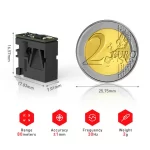
A sensore di distanza laser è un dispositivo senza contatto che misura la distanza da un oggetto utilizzando un raggio laser. Emette un segnale laser, ne rileva la riflessione dal bersaglio e utilizza un principio di misurazione specifico per calcolare la distanza in modo preciso e rapido. La funzionalità principale dipende dal principio di funzionamento del sensore di distanza laser, che varia a seconda del tipo di sensore e della sua applicazione.
⚙️ 1. Tempo di volo (ToF): Principio di funzionamento di un sensore di distanza laser di base
Come funziona il principio del sensore di distanza laser
Il sensore emette un breve impulso laser e misura il tempo di ritorno del segnale riflesso dall'oggetto.
🧠 Distanza = (Velocità della luce × Tempo di volo) ÷ 2
Questo è il principio di funzionamento del sensore laser di distanza più comune per le applicazioni a lungo raggio.
Vantaggi
- Ideale per misure a lunga distanza (fino a 2000 m)
- Funzionamento ad alta velocità, funziona bene su bersagli in movimento
- Prestazioni affidabili in ambienti esterni
Applicazioni
- UAV/droni
- Sistemi di traffico intelligenti
- Monitoraggio industriale della distanza
- Oggetto a lungo raggio rilevamento
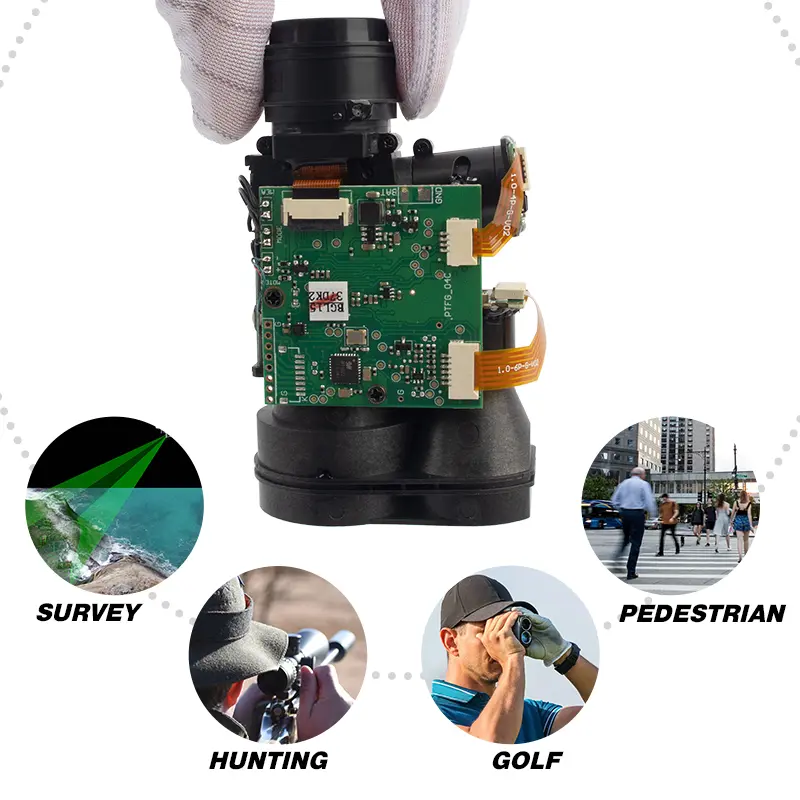
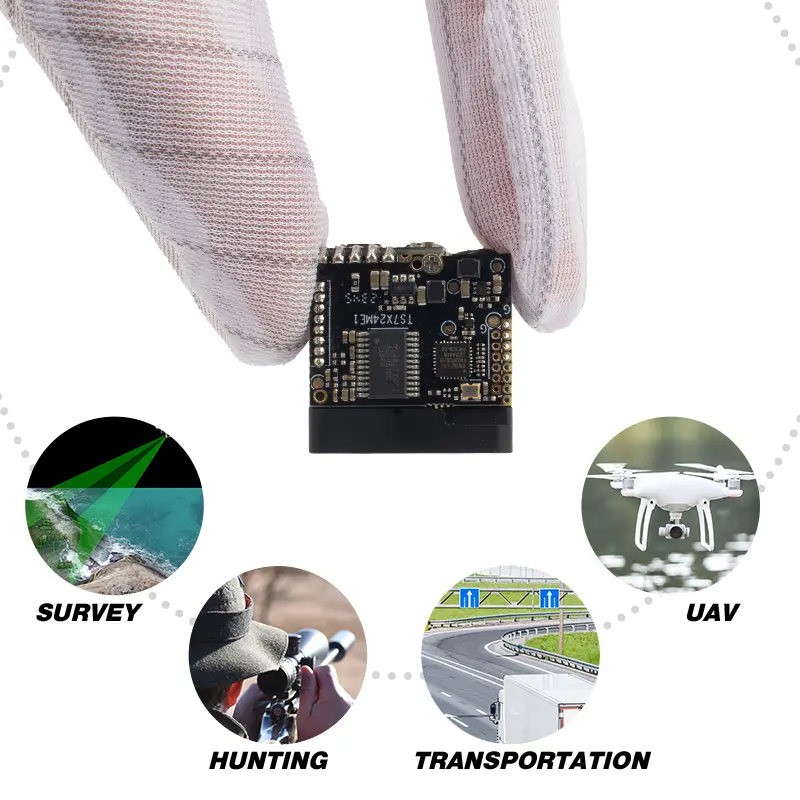
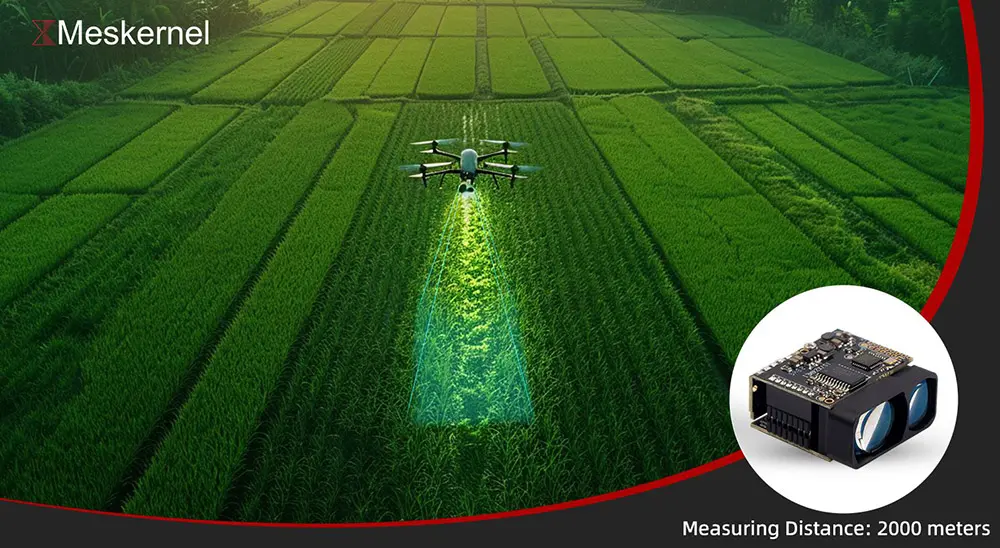
⚙️ 2. Spostamento di fase: Principio di funzionamento di un sensore di distanza laser ad alta precisione
Come funziona
Il sensore emette un raggio laser modulato e confronta la differenza di fase tra il segnale emesso e quello ricevuto per calcolare la distanza.
Lo spostamento di fase è direttamente correlato alla distanza percorsa dall'onda laser.
Il principio di funzionamento di questo sensore di distanza laser è preferito nell'automazione industriale per la sua precisione.
Vantaggi
- Estremamente preciso a breve e media distanza
- Migliore stabilità in condizioni ambientali variabili
Applicazioni
- Sistemi di movimentazione dei materiali
- Automazione di fabbrica
- Monitoraggio del trasportatore
- Rilevamento del livello interno
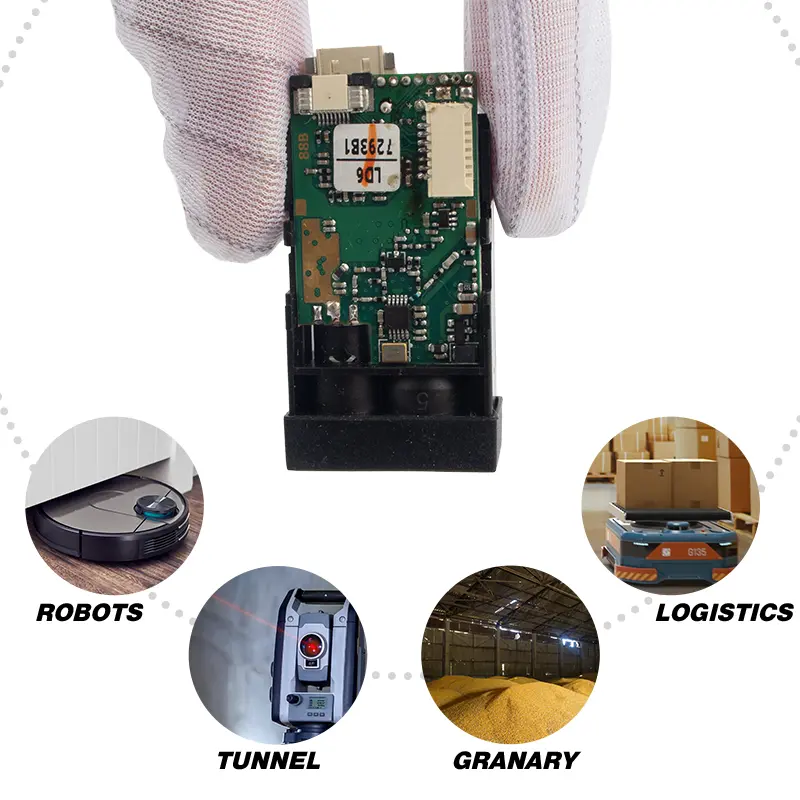
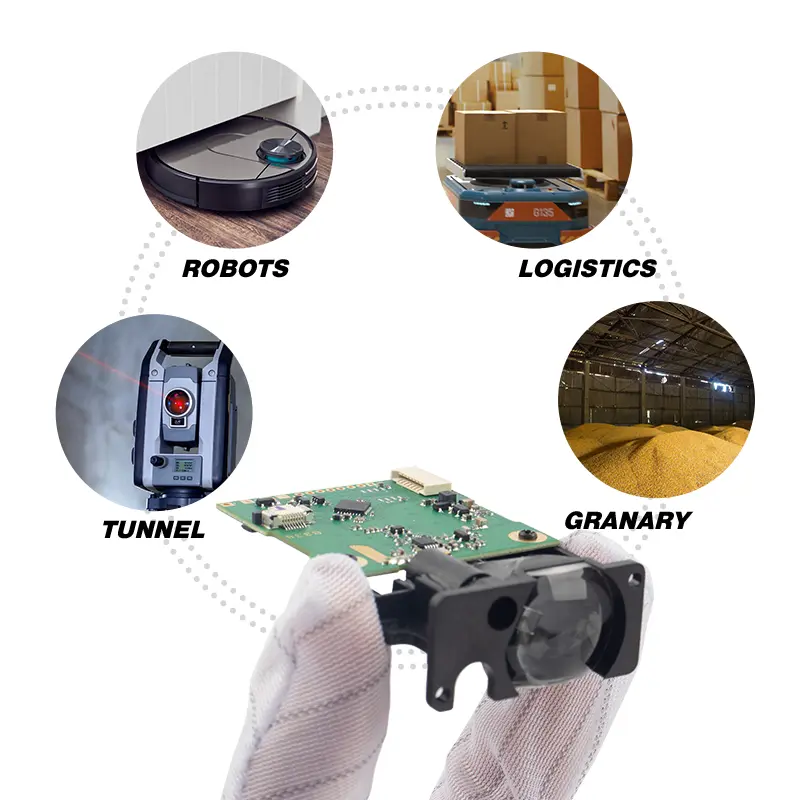

⚙️ 3. Triangolazione: Principio di funzionamento di un sensore di distanza laser a corto raggio
Come funziona
La triangolazione utilizza la geometria. Il sensore proietta un punto laser su un bersaglio; il raggio riflesso viene catturato con un angolo noto da un rilevatore sensibile alla posizione (PSD). La posizione della riflessione sul PSD cambia con la distanza.
Il principio di funzionamento di questo sensore di distanza laser è molto diffuso nei sistemi embedded dove le dimensioni compatte e la precisione sono importanti.
Vantaggi
- Eccellente per misure ad alta risoluzione e a corto raggio
- Tempi di risposta molto rapidi
- Compatto e a bassa potenza
Applicazioni
- Robotica mobile (evitamento di oggetti)
- Smartphone (ad esempio, riconoscimento facciale)
- Dispositivi medici
- Sistemi OEM integrati
📊 Principi di funzionamento dei sensori di distanza laser a confronto
| Principio di funzionamento | Gamma | Precisione | Velocità | Il miglior caso d'uso |
|---|
| ToF | 1-2000m+ | ±1m | Alto | Compiti a lungo raggio in ambito esterno/industriale |
| Spostamento di fase | 0.01-200m | ±3 mm | Medio | Automazione interna e logistica |
| Triangolazione | 0.01-1m | ±0,1 mm | Molto alto | Robotica, smartphone, strumenti integrati |
La comprensione di queste differenze consente di abbinare alle proprie esigenze il giusto principio di funzionamento del sensore laser di distanza.
🛒 Esempi di sensori di distanza laser reali che utilizzano questi principi
Meskernel fornisce un'alta qualità moduli di distanza laser costruiti su ciascuno dei principi sopra menzionati:
- ✅ Serie LDJ-4Hz e 10Hz - Utilizzare lo sfasamento per attività industriali di breve e media durata
- ✅ TC25 E TS1224 Serie - Affidatevi al ToF per misurazioni a lungo raggio fino a 2000m
- ✅ Mini moduli OEM - per applicazioni sensibili allo spazio
La scelta del giusto principio di funzionamento del sensore di distanza laser garantisce la massima affidabilità e precisione del sistema.
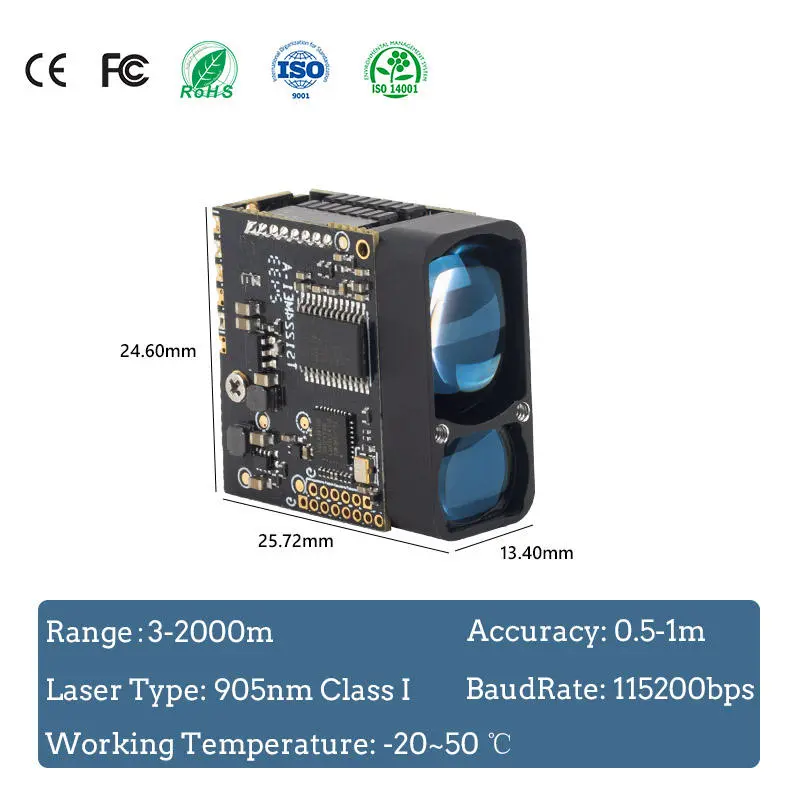
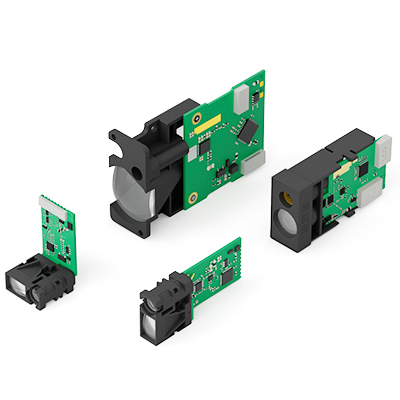
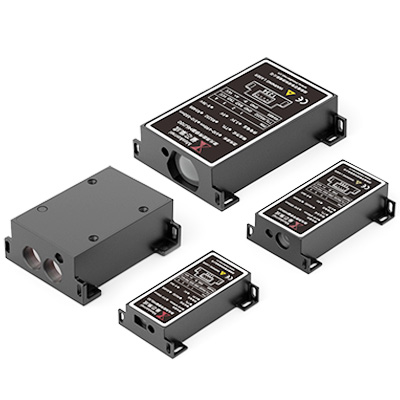
👉 Esplora tutti i sensori di distanza laser "
Domande frequenti sul principio di funzionamento del sensore di distanza laser
Q1: Quale principio di funzionamento del sensore di distanza laser è il migliore per i droni?
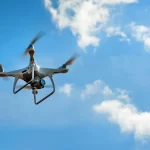
Il ToF è il più affidabile grazie alla sua capacità di raggiungere lunghe distanze e alla resistenza agli errori legati al movimento.
D2: Lo spostamento di fase è migliore del ToF per l'uso in interni?
Sì, il Phase Shift offre una risoluzione più elevata a distanze ridotte, rendendolo ideale per l'automazione in interni.
D3: Qual è la differenza tra Triangolazione e ToF?
La triangolazione è basata sulla geometria e viene utilizzata per il rilevamento a distanza ravvicinata, mentre il ToF si basa sul tempo di percorrenza del laser ed è adatto al rilevamento a lungo raggio.
D4: È possibile ottenere tutti e tre i tipi di sensori da un unico fornitore?
Sì. Piattaforme come Meskernel fornisce sensori basati su tutti i principali principi di funzionamento dei sensori di distanza laser.
Il sensore di distanza laser principio di lavoro scelto può incidono in modo significativo sulle prestazioni, sui costi e sull'affidabilità del progetto. Sia che stiate progettando un sistema robotico ad alta precisione o un robusto rilevatore di distanza per esterni, la comprensione del modo in cui sensori laser vi aiuterà a scegliere la soluzione giusta.
Padroneggiando le basi del tempo di volo, dello spostamento di fase e della triangolazione, sarete ben equipaggiati per prendere decisioni informate e distribuire sensori di distanza laser in modo più efficace.
https://meskernel.net/time-of-flight-distance-sensor/